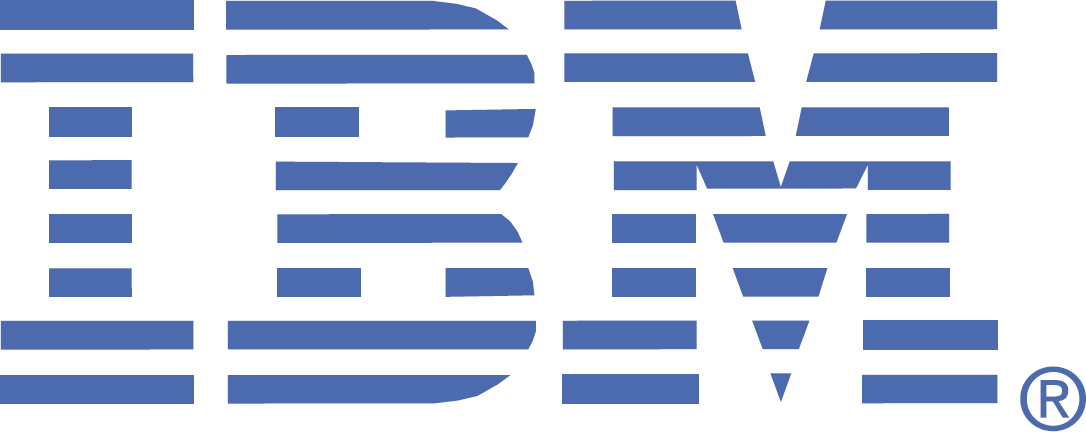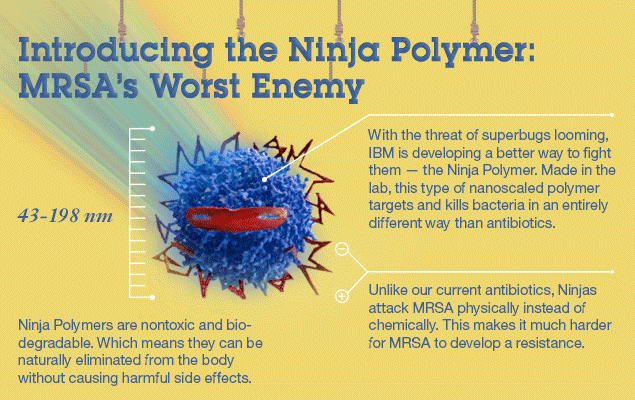
INNOVATORS
MASSACHUSETTS INSTITUTE OF TECHNOLOGY
The Massachusetts Institute of Technology is considered one of the more profound innovators of nanomedicine: the Institute dedicated an entire laboratory to the field, partnering with Harvard Univeristy to establish the Sengupta Laboratory, Laboratory for Nanomedicine. Their primary focus is to discover new engineering solutions and with the help of nanotechnology, apply them to cure complex diseases. By integrating biology and nano-scale engineering, the Sengupta Laboratory strive to present innovative ways of curing diseases.


IMAGE 29
IMAGE 28
Last year, MIT engineers helped achieve great leaps in the field of nanomedicine - particularly the focus on vaccination. Previously, vaccines were delived to a patient's lungs through n aerosol spray, however, it was not an effective method as the lungs often cleared away the vaccination before it was able to provoke an immune response. MIT engineers developed a solution to this problem - they have created a new nanoparticle that was able to guard the vaccine and keepsake it within the lungs long enough to allow the vaccine to trigger an immune response. MIT's leader of the research team proposed further possible applications of the new vaccine delivering technology - from protecting against respiratory viruses to preventing transmission of HIV:




IMAGE 30, 33, 34
"'This is a good example of a project where the same technology can be applied in cancer and in infectious disease. It's a platorm technology to deliver a vaccine of interest'" (35).
MIT mice studies also indicated that the use of the new nanoparticles in vaccination increased the success rate of vaccination intake by the immune system, thus proving that the newly proposed method provided a more effective way of delivering vaccines in the human body, broadening the horizons of nanomedicine as the possiblity of the prosperity of protecting one from infectious diseases and sexually transmitted diseases became more realistic.
The Stanford School of Medicine is famous for it's notable achievements in the field of medicine and human health. In 2011, Stanford entered the field of nanomedicine with style - pushing the extent of the possiblities of nanomedicine closer to reality. Sanjiv Sam Gambhir, MD, PhD lead the study of toxicology of nanoparticles in mice. These nanoparticles - spheres with a gold core - are smaller than viruses (100 nanometers in size!) and encapsulated in silica shells bound to polyethylene glycol molecules, making them more biologically friendly for the human body, avoiding rejection or attack.
STANFORD: STANFORD SCHOOL OF MEDICINE

 INNOVATORS |
|---|
 INNOVATORS |
 INNOVATORS |
IMAGE 27, 35, 36
IMAGE 31

IMAGE 39

IMAGE 32
The nanoparticle's gold core amplifies the "Raman Effect" - bouncing of light off material in discrete wavelenghts tailored to the specific material they represent. With the "Raman Effect" of the nanoparticles, scientists will be able to detect and classify a disease without the need for physical extraction of tissue samples from the patient. Such method was tested by Stanford's team on mice by administering 60 mice with nanoparticles; the results showed that the nanoparticles did not physically damage the subject nor cause systemic toxicity. Gambhir's group provided data which demonstrated that nanoparticles may be safely used in humans for disease detection and moved nanomedicine one step closer to helping humanity.
UC DAVIS: COLLEGE OF ENGINEERING
At the University of California, Davis, the College of Engineering's Center for Nano-MicroManufacturing develops "micro-fabrication technologies, processes, and services," focusing on nanometer-scale lithography, etching, and deposition in order to help spread reseach on biomedical devices; over the years, UC Davis gifted the world of nanomedicine with several new research and advacements:
1) UC Davis College of Engineering's Biomedical Engineering Ferrara Lab, in collaboration with the National Heart, Lung, and Blood Institute's Programs of Nanotechnology Reserach, the targeted their research on cardiovascular diaseases. The Ferrara Lab initiated the development of nanoparaticle-based tools which would "enchance stem cell repair of damaged heart tissue" and improve cardiovascular disease therapeutics.

IMAGE 37
2) The researchers at UC Davis also synthesized a new nanoparticle whose properties allow it to release its contents once exposed to low pH levels. Previously, many nanoparticles utilized in cancer treatment released their drugs prematurely in blood circulation, unable to deliver the drugs to the site of the tumor. Luo and Kit Lam of UC Davis coated their nanoparticles with a "hydrophilic polyetylene glycol outer layer" over a cholic acid core; the key aspect are the boronate-crosslinked micelles that link the core to its outer membrace - the links are dual responsive, meaning they will burst open and release their inclosed drug once in an acidic (low pH) tumor environment or once activated by an administrtion of mannitol - a, FDA-approved sugar alcohol. This new design increaseas the stabiity of the nanoparticle and ensures that its contents will be delivered to the targeted tumor site, thus significantly increasing the preciseness of drug delivery in cancer treatments.

IMAGE 38
3) Biomedical engineers at UC Davis under the leadership of Kathy Ferrara proposed an innovative treatment for breast cancer: using nanoparticles infused with copper and doxorubicin to deliver the drugs to the site of the tumor, releasing the anitcaner drugs with ultrasound once the nanoparticle is inside a tumor. Their mice studies proved the treatment successful, leading it out to clinical studies in companion animals.
Luo and Kit Lam's nanoparticles:
> Boronate-Crosslinked Micelles are dual responsive
> Inner cholic acid core
> Hydrophilic polyetylene glycol outer layer
The nanoparticles are responsive to acidic environments (low pH levels).
IBM
IBM is credited with synthesizing Ninja Polymers - one of the most popular and important of the laters breakthroughs in nanomedicine.
The IBM nanomedicine polymer program yeilded a new method of microscoping etching with an electrostatic charge - allowing work at an atomic level. With this technique, the Ninja Polymers entered the world of nanomedicine.
Ninja Polymers are:
"sticky nanostructures that move quicly to target infected cells in the body, destroy harmful content inside without damaging healthy cells in the area, and then disappear by biodegrading"
Their "sticky" propertry allow Ninja Polymers to attach to a bacteria's surface and facilitate the destabilization of the bacterial outer membrane, causing the bacteria to disintegrate and burst while eliminating the target from developing resistance to the Ninja Polymers.
IBM researchers used nanotechnology to develop the macromolecules - Ninja Polymers - and alluded each with the ability to biodegrade, a positive charge, and the property of water solubility; thus, the Ninja Polymers, when mixed with water and raised to a normal human body temperature transform into hydrogel - a gel easy to manipulate and that is biodegradable, non-toxic, and biocompatible.
Auritol (CYT-21001)
A mixture formulated on a paclitaxel analog, populated with TNF nanoparticles. The goal of Auritol is to reduce side effects pertaining to currently utilized paclitaxel forms.

IMAGE 40
The Ninja Polymers already found real-life applications in the field of medicine - countering fungal infections. IBM, partnered with the Institute of Bioengineering and Nanotechnology, proved that the new Ninja Polymers are superior to antibiotics in that they are able to penetrate the bacterial membrane and decimate it, leaving the bacteria to disintegrate as its damaged outer layer is unable to support the organism. Since Ninja Polymers also prevent their targets from forming resistance to the Polymers, unlike antibiotics, they are able to target antibiotic-resistant pathogens, such as MRSA.
CYTIMMUNE SCIENCES, INC.
The CytImmune Sciences, Inc focus on applying nanomedicine in cancer treatments. CytImmune Sciences is a clinical stage company whose focus lies on the synthesis and commercialization of cancer therapies involving nanomedicine. Colloidal gold nanoparticles deliver chemotherapy medicine directly to tumor sites - such as the tumor-killing agend Tumor Necrosis Factor Alpha (TNF) - which is attached to the nanoparticle. A Polyethylene Glycol (PEG-THIOL) layer coats the nanoparticles in order to safeguard it from triggering an immune system response and allowing the nanoparticle to reach the tumor site, where it binds to the cancerous cells and releases TNF.
CytImmune Sciences currently focus on two products directly tied to the field of nanomedicine:
Gold nanoparticle coated in PEG-THIOL, containing TNF.
Aurimune (CYT-6091)
Aurimune (CYT-6091)

IMAGE 41

IMAGE 42